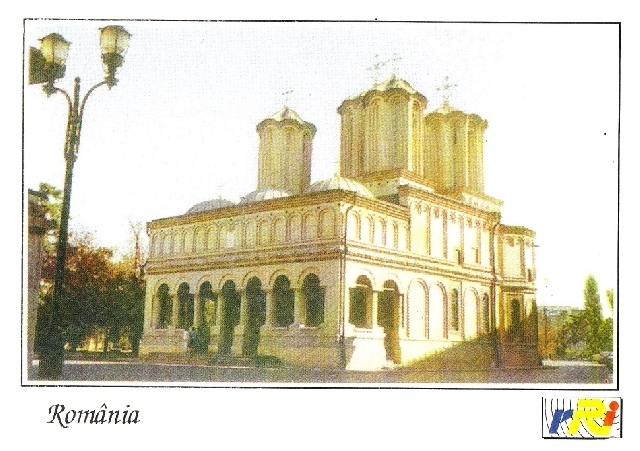The Patriarchate Church and Palace in Bucharest
A short history of one of Bucharest's iconic buildings.

Christine Leșcu, 31.12.2016, 14:00
On one of Bucharests highest hills there lies a building compound that has a great significance for the city. The compound includes the first Parliament building of the United Romanian principalities as well as the church of the Orthodox Patriarchate, the countrys religious centre. The history of the buildings on the Metropolitan Hill, as the place is known to the Romanians, started to gain importance back in mid-17th century.
At that time, ruler Constantin Serban set out to build a monastery big enough to house a Metropolitan Bishopric, a title recently bestowed upon the Orthodox Church in Wallachia. Because the religious significance of the place had already been known, a decision was made in 1997 that the present Patriarchate Palace, a building housing the administration offices of the Orthodox Patriarchate, be placed on the same premises. However, the buildings history is much older and its initial role was to house the deputy assembly. It was built between 1903 and 1907 upon blueprints by architect Dimitrie Maimarolu, the one who had also drawn the plans for other iconic buildings in Bucharest such as the National Military Club close to the University Palace. Here is historian Dan Falcan with more on the history and the architect that built the Patriarchate Palace.
“Dimitrie Maimarolu was a major architect of the time. He also designed the Armenian Church in Bucharest. He came up with an ingenious and intelligent architectural method in order to avoid an architectural inadequacy while planning the new premises. He managed to find a balance between the old and new buildings in the area and he put to good use the slope behind the former Palace of Parliament, the present day Patriarchate Palace. Actually, a series of offices belonging to the Deputy Assembly was built a couple of stories below, as the slope allowed for such a construction. We must also mention the old Deputy Assembly building, erected on the same premises and which hosted a famous session of the leading political figures of the former Kingdom of Wallachia, which elected Alexandru Ioan Cuza as ruler on January 24th 1859.
On the same hill, just opposite this building, there lies the Patriarchate Church built in mid 17th century in the same architectural style as the cathedral in Curtea de Arges, southern Romania, built by Wallachias famous ruler Neagoe Basarab (1512 –1521). This churchs significance for Bucharest was increased by a special event. Here is historian Dan Falcan with more on the issue.
“The church houses the relics of St. Dimitrie Basarabov, the protector of Bucharest. They were brought here in 1774 by a merchant from Bucharest who purchased them from a Russian general who came to have them in his possession in Bulgaria. The merchant donated them to the Metropolitan Bishopric and since 1774 these relics are said to have been protecting Bucharest. Every time the city went through tragic events, being hit by drought or various epidemics, the relics were used in religious services.
In spite of the issues it had to face along the centuries, the church has remained unchanged.
“If a Bucharester from the 17th century saw the church right now, he would recognize it immediately. The church hasnt undergone major changes along the years. Outbuildings have been added, like those housing the metropolitan Bishop and later the Patriarch and his staff. After 1997 all the functional entities housed by these outbuildings moved to the Patriarchate Palace, which is larger and roomier. The building saw restoration works during the time of Patriarch Justinian back in the 1970s, but the Metropolitan Bishopric stays as a symbol of the old city. It is placed on one of the capitals hills, just like Rome, and it was once surrounded by several monasteries, some of which could be seen nowadays. The Metropolitan Bishopric stood high above the city, because at that time the old Bucharest was scattered around the hill the church was built upon, what we know at present as the Union Square and went no further than the Victory Square, the present government headquarters.
The Metropolitan Bishopric was turned into a Patriarchate around 1925.
(Translated by D. Bilt)





























